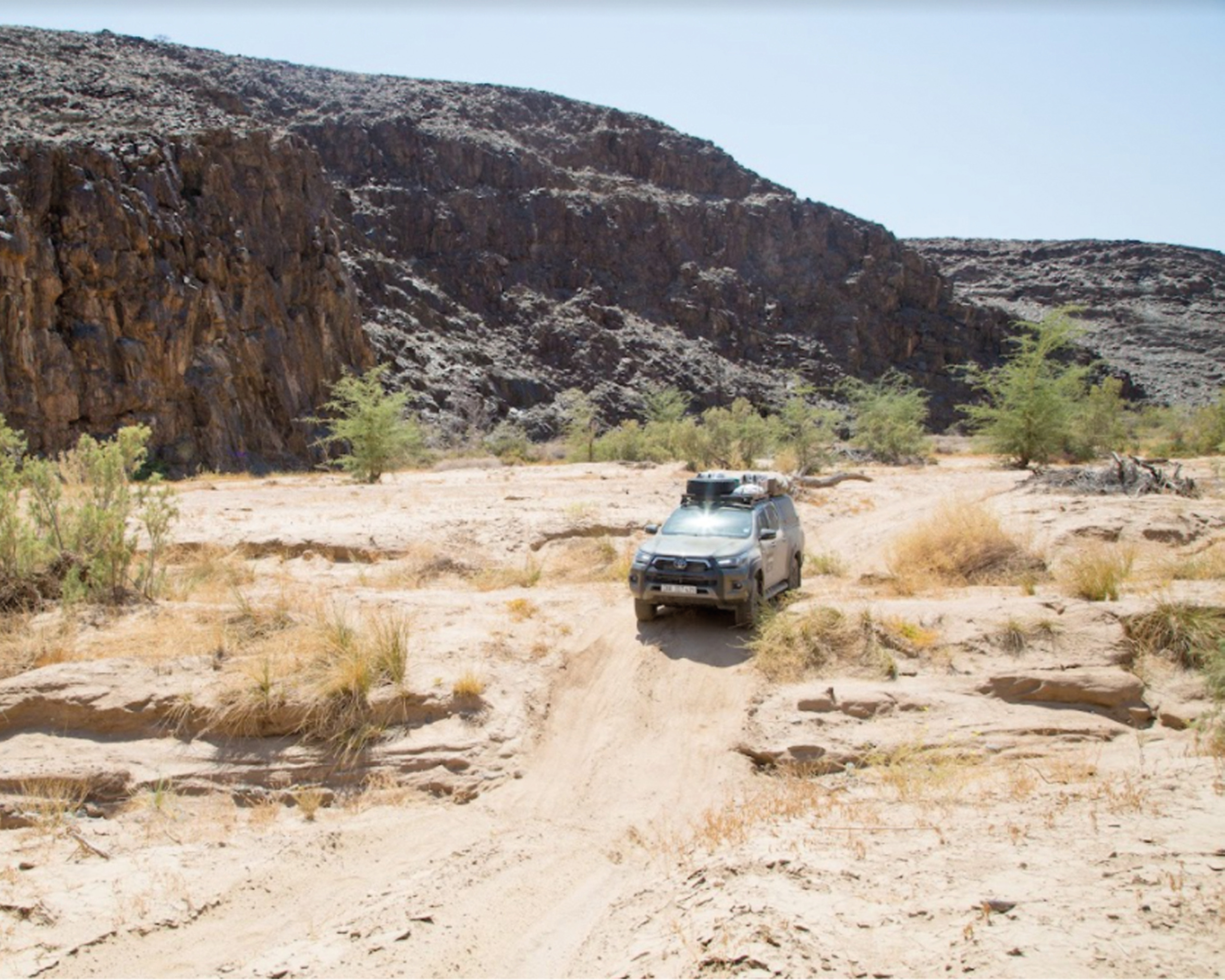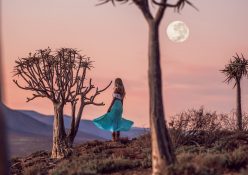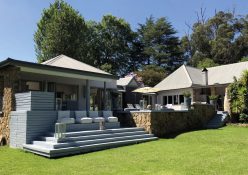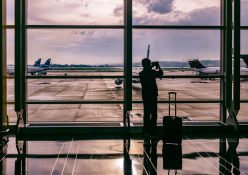Load up the jerry cans, top-up those water tanks and get your tyre pressure low … real low. Adventure-addicted Caira-lee Durand heads for Damaraland’s desert plains in search of Namibia’s wilder side.
Where to stay in Damaraland
White Lady Lodge
One of Damaraland’s most popular camping and lodge options, situated 12 kilometres away from the Brandberg Mountains where the famous ‘White Lady’ rock painting can be visited. brandbergwllodge.com
Madisa Campsite
Located on the D2612 road and the Goantagab River, Madisa Campsite overlooks the Brandberg Mountains and offers a variety of camping options. madisacamp.com
Adventure-seekers are spoilt for choice in Namibia. There’s Sossusvlei’s mighty Dune 45, hikes through the Fish River Canyon, and – of course – the magnificent wildlife that’s found in Etosha.
Then there’s Damaraland in northwestern Nambia, between Etosha National Park and the Skeleton Coast. It’s one of the country’s least populated areas, inhabited by Namibia’s oldest inhabitants, the Damara people. It’s also known for weird and mesmerising geological features, its never-ending river beds that nearly always run dry, and fascinating desert-adapted wildlife.
It’s Ancient, empty, very wild. Outlined by giant purple rocky mountains, the vistas alone constitute a kind of drama. And then there’s the experience of travelling into it, through it, and setting up camp… I didn’t think it would take much to convince my partner, Otto, to use Damaraland’s off-road trails to put his new Toyota Hilux through its paces. He had a new canopy, roof racks and 4×4 upgrades (all done by Go Camp, great for serious camping needs). We also had all the other camping equipment we needed: a rooftop tent, battery packs, solar panels, fridge and freezer. We were fully self-sufficient.
‘Let’s go get lost,’ I urged him. But Otto was more savvy than me. He knew what lay in store for us. ‘The trail gets very narrow in places and we won’t be able to turn around,’ he said. ‘Getting stuck will not be an option. Help could be days away, we will need to make sure everything is in the medical kit and that we have supplies to last us,’ Otto added. That was rational stuff. Be prepared. And then he said, ‘If we come across any desert elephants, we’ll need to steer clear of them. Those guys can be skitty.’ Of course I hadn’t factored in the desert elephants.
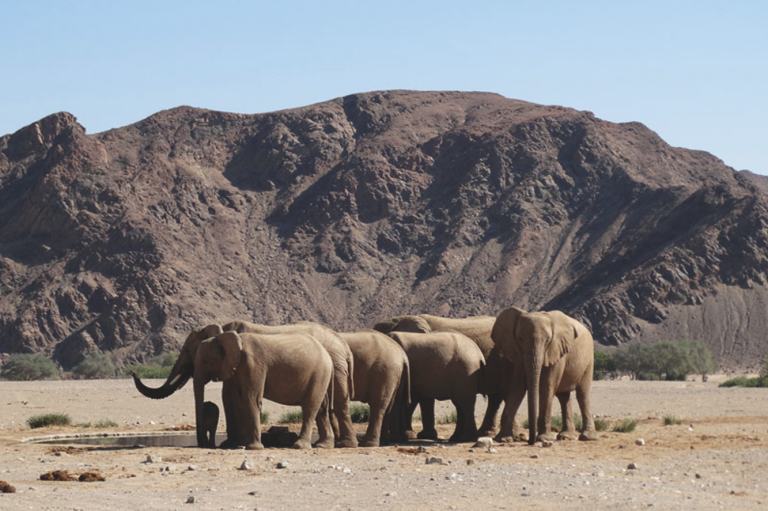
No itinerary, no accommodation
We were up earlier than the sun to embark on the Elephant Trail from White Lady Lodge on the northern side of the Brandberg, Namibia’s highest mountain. As with most wilderness trails, it took much longer than expected. Just 10 km of this trail can easily take three hours to cover. Soon after we’d left the lodge (and the last few vehicles we’d see for the next two days), we were surrounded by the Damaraland’s emptiness. Welwitschia, weird plants endemic to the Namib Desert and able to survive for up to 2 000 years in these harsh conditions, were scattered across the earth.
It wasn’t long before we spotted the large tracks of elephants, too. ‘Fresh,’ Otto said. Sure enough, soon after Otto switched off the engine and there they were. Desert elephants, smaller in size than the ones we’d seen in Etosha, can travel for hundreds of kilometres in search of food and water because of their big feet. Their tusks are also more brittle, due to a lack of nutrients.
We sat quietly and watched them feeding on trees not too far from us. They took no interest in our presence even if they were fully aware of us. Otto’s finger hovered above the engine’s start button, ready to make tracks, just in case.
Eventually we did move on, the soft yellow sand gave way to brown and red, and eventually we were in rocky terrain, working our way through the twisty folds of ancient mountains with their warped textures and burnt colours. We might have been driving on Mars.
We left Mars and landed at Ugab Rhino Camp. Our Tracks4Africa GPS told us that the camp was closed but that we could leave a donation if we wanted to use it anyway. All around the campsite were signs warning about wild lions and elephants in the area. An especially aggressive lion was apparently the cause of the camp’s closure, so we decided to move on.
We found a spot to rest for the night just as the sun dropped. We set up camp in one of the off-trail hidden valleys hugged by giant boulders. As stars spread across the sky, barking geckos performed their weird lullaby and we absorbed all of Damaraland’s powerful medicine. Bliss in the land of dust and dunes, and our wildest dreams come true.
Tips and gear for the trip
Self-driving in the Damaraland area is not recommended without good knowledge of the trails and comprehensive 4×4 driving experience. It’s advised to travel with two or more vehicles. Alternatively, contact a local operator for a guided trip.
A good GPS is important to help navigate through remote places when you’re offline. We used Track4Africa, which not only showed us when we were straying off the trail, but it gave us plenty of other information too, like dangerous sections to pay attention to.
Mercifully, recovering our vehicle wasn’t necessary during the Ugab River Trail section of our trip, but we did need to plug punctured tyres three times on the way there. Having a recovery kit with you is absolutely non negotiable. A recovery kit is one of the many off-road camping accessories you can rent from Go Camp.
When it comes to wanting a sense of security while sleeping in the desert, there’s no better place than on top of your vehicle in a rooftop tent. They’re quick and easy to set up and take down. Several quality brands built for harsh conditions are available and you can rent rooftop tents from Go Camp, and other camping outfitters, too.
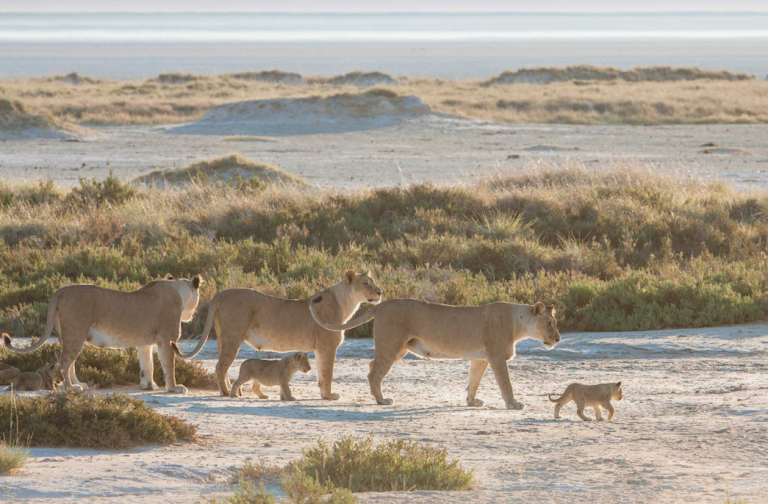
Photography: Unsplash, courtesy images

